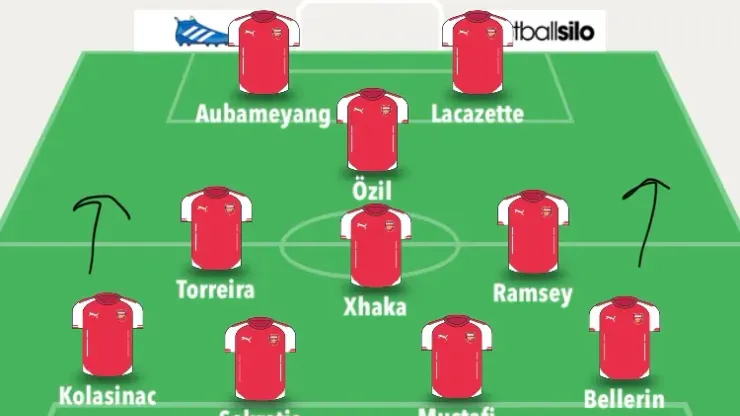Arsenal have sputtered just a bit following a string of 11 consecutive victories. While they have still not yet lost a match in nearly three months, the Gunners recorded four draws in their last five overall matches. During these last five games, Arsenal have managed just six total goals. Compare this to the five matches prior to this mini slump in which the north London outfit scored 14 total goals.
Because of their somewhat shaky defense, Arsenal need their offense to be firing on all cylinders for most of their matches. With players such as Pierre-Emerick Aubameyang, Alexandre Lacazette, and Mesut Özil, they are certainly capable going forward. However, one issue with this team is fitting these pieces into the right places.
Both Aubameyang and Lacazette are quintessential strikers. The dynamic duo is equally capable of scoring 20, 25, or even 30 goals per season in the center forward position. The issue, however, is fitting them in the same starting XI. Manager Unai Emery tends to favor a popular 4-2-3-1 formation and has regularly chosen Lacazette as his main center forward. This has meant either starting the match with Aubameyang on the bench, or deploying the pacy player out on the left flank.
Despite his pace, which is an obvious positive attribute for a winger, the Gabon international is clearly better more centrally. Obviously being cognizant of this, Emery has occasionally gone with a more traditional 4-4-2 formation. This could be all well and good except for the fact that the club happens to have one of the best attacking midfield players on the planet with Özil. The German is undeniably at his best slotted just behind the striker(s) in the number 10 position.
SEE MORE: Schedule of Arsenal games on US TV and streaming
The positional conundrum has forced Emery to make major decisions and change formations throughout certain matches. In the club’s last match against Wolverhampton, the Spaniard made a formation change during halftime. This time he switched to from his preferred 4-2-3-1 to essentially a 4-3-1-2 formation. While Arsenal failed to win the match after falling behind 1-0 in the first half, the team certainly played better after the formation change.
The 4-3-1-2 allowed both Aubameyang and Lacazette to play their preferred striker positions, while also allowing Özil to roam in the space behind the aforementioned duo. The Gunners managed seven shots in the second half with this formation, compared to just three in the first half. Although they were still susceptible to the counter attack by Wolves, they also put themselves in more goal-scoring opportunities. This was apparent with Henrikh Mkhitaryan’s goal, as well as Aubameyang’s glorious missed chance right in front of goal.
A misconception about the 4-3-1-2 is that it is a narrow formation and lacks width out on the flanks. In Arsenal’s case in particular, their fullbacks tend to get extremely high up the pitch when the team has the ball. Offensively-minded defensive players such as Hector Bellerin and Sead Kolasinac/Nacho Monreal regularly provide the Gunners with width when they need it. Also, because of the pace of Aubameyang and Lacazette, one of the strikers can also float more wide if needed.
Arsenal clearly have a talented side. On paper they can compete with anyone. However, finding the right formation to accommodate the players in the squad is crucial. Emery has done a phenomenal job so far, but is still tinkering with his team to find the right balance. The 4-3-1-2 formation could be the answer that the Spaniard is looking for.
200+ Channels With Sports & News
- Starting price: $33/mo. for fubo Latino Package
- Watch Premier League, Women’s World Cup, Euro 2024 & Gold Cup
The New Home of MLS
- Price: $14.99/mo. for MLS Season Pass
- Watch every MLS game including playoffs & Leagues Cup
Many Sports & ESPN Originals
- Price: $10.99/mo. (or get ESPN+, Hulu & Disney+ for $14.99/mo.)
- Features Bundesliga, LaLiga, Championship, & FA Cup
2,000+ soccer games per year
- Price: $5.99/mo
- Features Champions League, Serie A, Europa League & Brasileirāo
175 Premier League Games & PL TV
- Starting price: $5.99/mo. for Peacock Premium
- Watch 175 exclusive EPL games per season







